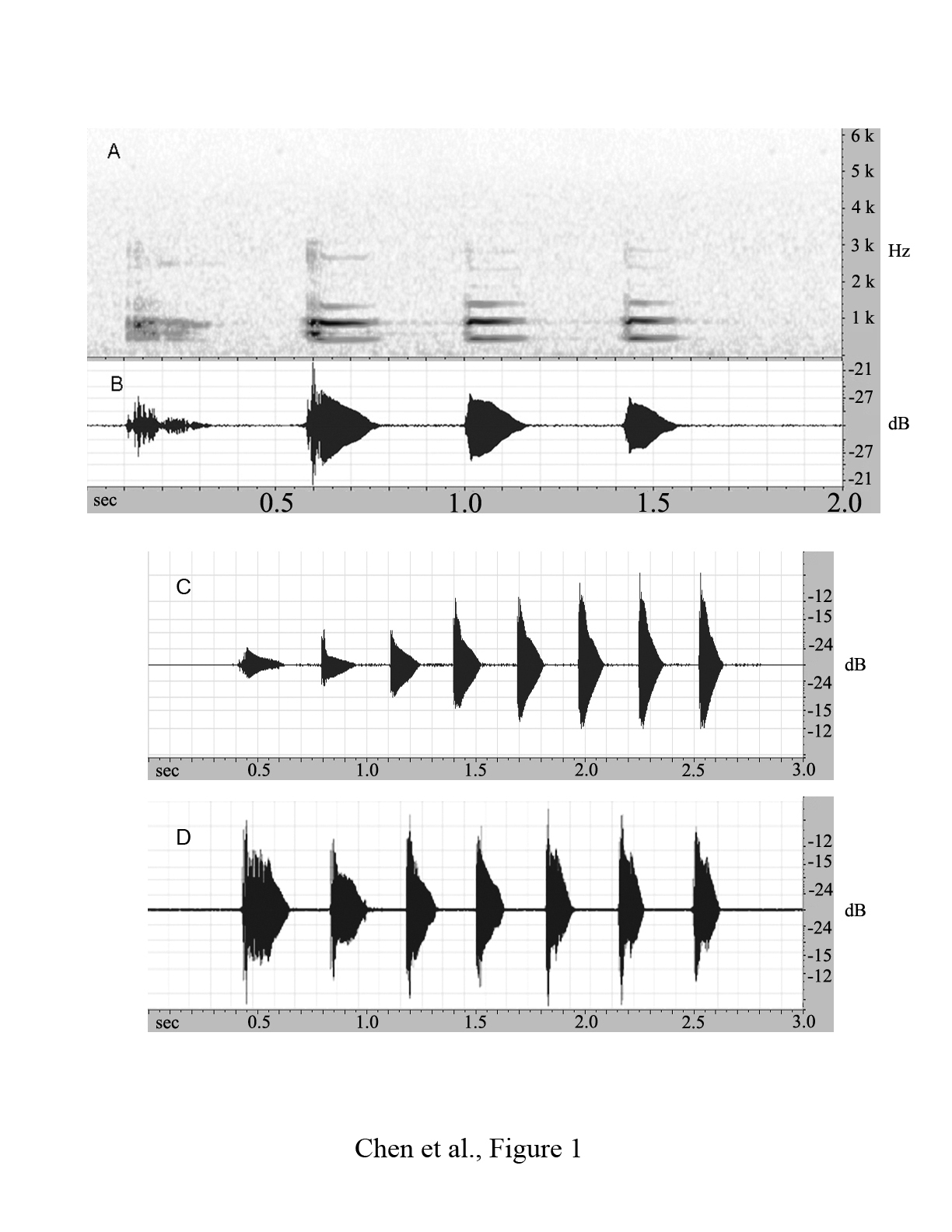 |
 |
 |
 |
Scientists at the Chengdu Institute of Biology, Chinese Academy of Sciences, focus study on the behavioral ecology and evolution of reptilian and amphibian species native to East Asia. I recently spent a sabbatical period working with Professor Yezhong Tang and his colleagues at the CIB. Among the most interesting of the species studied by his laboratory is the Emei music frog (Babina daunchina) which lives in the mountainous region near the Chengdu plain. Of interest is how Babina males and females use acoustic signals to coordinate social and reproductive behaviors including female mate choice and male-male competition.
The Emei music frog (Babina daunchina) is native to the Emei mountain region of Sichuman China. Babina males call from hidden nests (burrows) and females select mates on the basis of the information contained in the males' calls. Females produce click-like calls which act as stimuli inciting males to call more frequently and to behave aggressively toward one another. Females enter the male's burrow where the pair engages in amplexus. In Babina males do not vocalize during amplexus. In stead the male grasps the female rhythmically. The somatosensory stimulation causes the female to ovulate and lay eggs in the burrow. Interesting, males only continue to stimulate the female if the female produces click-like stimulating calls (Cui et al, 2010). Thus both auditory and somatosensory stimuli activate neural pathways controlling both male and female reproductive behaviors in this species.

 |
| Males may call from outside as well as inside burrows. The acoustic qualities of male calls are shown in the figure above. Notably male advertisement calls are affected by the filter properties of the burrow. The dominant frequency of calls produced from within burrows is lower than that of calls produced outside the nest. Photaxis experiments show that females prefer male calls produced from within the nest and presumably discriminate between male calls on the basis of acoustic features such as the dominant frequency band during mate selection. |
References:
